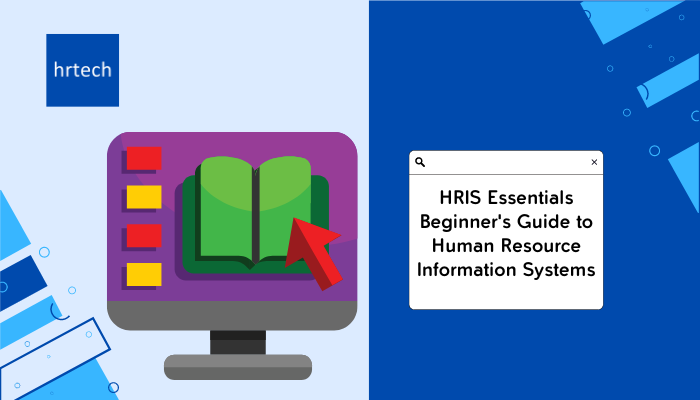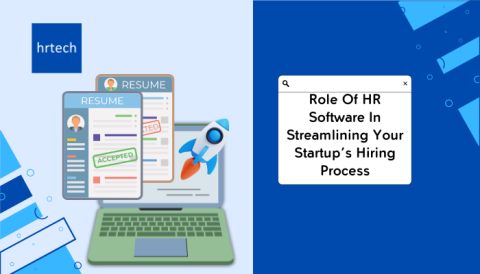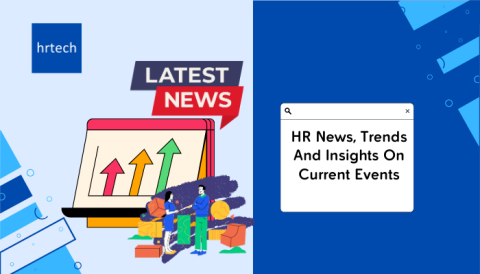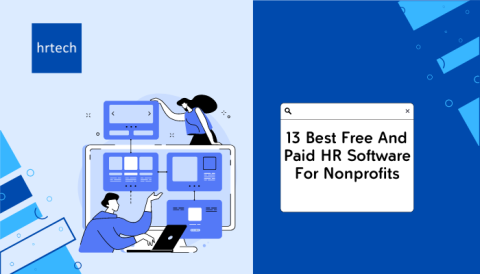HRIS is a game-changing software that has revolutionized the HR industry. HRIS stands for Human Resources Information System, and it’s the go-to software for storing and managing employee data.
But it’s not just a simple data storage tool. An HRIS encompasses various functionalities that are essential for end-to-end human resources management. From recruitment to performance management, learning and development, and much more, CHRIS has got you covered.

You might think that HRIS software is complicated and difficult to manage. But that’s not the case! In fact, it’s quite the opposite. HRIS is essentially a software package that’s easy to use and implement.
So, whether you’re a small business owner or a large corporation, HRIS is the perfect solution for all your HR needs. To avoid confusion, it’s useful to keep in mind that other commonly used names for human resource information systems are HRIS and HRMS, or human resources management systems.
Core Functions of Human Resource Information System (HRIS):
The main jobs of HRIS (Human Resources Information System) involve doing important tasks to make HR work better and faster in a company. These tasks usually include:
Applicant Tracking Systems: HRIS software handles all the company’s recruiting needs. It tracks candidate information and resumes, enables recruiters to match job openings to suitable candidates from the company’s application pool, and helps in guiding the hiring process.
Payroll: HRIS systems integrate with various data sources within the organization, such as employee attendance records, time-off requests, and benefits information. This integration ensures that all relevant data for payroll processing is consolidated in one place.
Time & Attendance: This module gathers time and attendance data from employees. These are especially relevant for regular and shift employees/workers or where employees clock in and out. Back in the day, employees often wrote down their working hours on a piece of paper. Then, the manager would manually enter the data into a time-tracking system. Based on this data, payment orders were generated and paid to all employees. But now, with HRIS, there’s no need for manual entry. This system ensures that pay is calculated accurately without mistakes.
Performance Management: HRIS allows for the automation of performance evaluation processes. It enables managers to set performance goals, track progress, and conduct performance appraisals efficiently. Automated reminders and notifications ensure that evaluations are conducted on time, reducing administrative burden and ensuring consistency.
Date Storage/Archiving: The HRIS system gathers and securely stores crucial data about the employees in an organization. With its data storage capability, important information is automatically backed up and safeguarded. This ensures that even if digital files are at risk of being lost or damaged, they can be replicated and stored in multiple secure locations for added protection.
Report & Analytics: One of the pivotal components of HRIS is its robust reporting and analytics module. Advanced systems empower organizations to effortlessly generate comprehensive HR reports covering a wide array of topics, including employee turnover, absenteeism, performance metrics, and beyond. Through sophisticated analytics, these insights are meticulously analyzed to facilitate well-informed decision-making processes.
Employee Self-Service: HRIS often includes self-service portals or mobile apps that empower employees to access and update their personal information, view pay stubs, request time off, enrol in benefits, and participate in training activities, reducing administrative burdens on HR staff.
These core functions collectively enhance HR efficiency, improve data accuracy, ensure regulatory compliance, and foster a positive employee experience within the organisation.
Transforming HR through Agile Workforce Solutions
Benefits of Human Resource Information System (HRIS):
HRIS is crucial for modern HR management, improving efficiency, accuracy, compliance, and employee satisfaction, and contributing to organisational success. The key benefits of HRIS include:
Centralised Data Management: HRIS provides a centralised database for all employee information, including personal details, job history, performance evaluations, benefits, and training records. This centralised system reduces redundancy and improves data accuracy.
Streamlined Processes: HRIS automates various HR processes such as payroll, benefits administration, time tracking, and recruitment, which helps to streamline workflows and reduces the administrative burden on HR staff.
Improved Decision-Making: With access to real-time data and analytics, HRIS enables managers and HR professionals to make more informed decisions regarding workforce planning, talent management, and resource allocation.
Enhanced Compliance: HRIS helps ensure compliance with labour laws, regulations, and company policies by automating processes such as payroll tax calculations, reporting, and documentation management.
Increased Efficiency: By automating routine tasks, HRIS frees up HR staff to focus on strategic initiatives such as employee development, engagement, and retention, thus increasing overall departmental efficiency.
Employee Self-Service: Many HRIS platforms offer employee self-service portals, allowing employees to access their own information, request time off, update personal details, and enrol in benefits, leading to greater employee satisfaction and engagement.
Cost Savings: While implementing an HRIS system requires an initial investment, it can lead to significant cost savings in the long run by reducing administrative overhead, minimizing errors, and optimizing resource utilization.
Scalability: HRIS systems are scalable, meaning they can grow and adapt along with the organization, accommodating changes in workforce size, structure, and needs without requiring extensive manual adjustments.
Data Security: HRIS systems offer robust security features to protect sensitive employee data, including encryption, access controls, and regular backups, ensuring confidentiality and compliance with data privacy regulations.
Types of HRIS Systems:
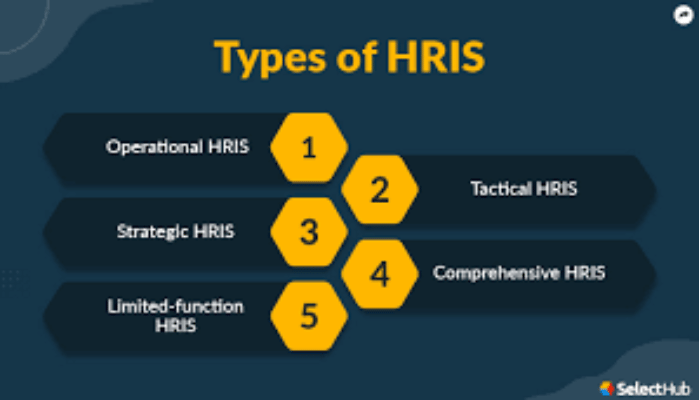
Human Resource Information Systems (HRIS) can be categorized into different types based on their functionality, deployment method, and target users. Here are some common types:
Core HRIS: Core HRIS systems focus on managing essential HR functions such as employee data, payroll, benefits administration, and compliance. They serve as a centralized database for storing and organizing employee information.
HRMS (Human Resource Management System): HRMS encompasses broader functionalities beyond core HRIS, including talent management, performance management, recruitment, learning and development, and workforce analytics. HRMS integrates various HR processes into a single platform for comprehensive HR management.
HRIS for Talent Management: These systems specifically focus on talent acquisition, retention, and development processes. They may include features such as applicant tracking, onboarding, performance evaluations, succession planning, and career development tools.
Employee Self-Service (ESS) Portals: ESS portals are modules within HRIS that allow employees to access and manage their own HR-related information, such as personal details, benefits enrollment, time-off requests, and performance feedback.
Learning Management Systems (LMS): While not exclusively HRIS, LMS platforms are often integrated into HRIS systems to facilitate employee training and development activities. LMS manages training content, course enrollment, progress tracking, and certifications.
Payroll Systems: Payroll systems within HRIS handle payroll processing tasks such as calculating wages, deductions, taxes, and generating paychecks or direct deposits. They ensure accurate and timely payment to employees while maintaining compliance with tax regulations.
Cloud-Based HRIS: These systems are hosted on remote servers and accessed via the Internet, offering scalability, flexibility, and cost-effectiveness. Cloud-based HRIS eliminates the need for on-premises hardware and software maintenance and provides anytime, anywhere access to HR data.
On-Premises HRIS: On-premises HRIS are installed and maintained on the organization’s own servers and infrastructure. They offer greater control over data security and customization but require upfront investment in hardware, software, and IT resources.
Hybrid HRIS: Hybrid HRIS combines elements of both cloud-based and on-premises systems, allowing organizations to leverage the benefits of both deployment models. For example, sensitive employee data may be stored on-premises for security reasons, while other HR processes are managed in the cloud for scalability and accessibility.
Each type of HRIS serves different organizational needs and objectives, and organizations may choose the most suitable type based on their size, budget, industry, and specific HR requirements.
How To Select and Implement an HRIS:
Selecting and implementing a Human Resource Information System (HRIS) is a critical process that requires careful planning and consideration. Here’s a comprehensive guide to help organisations navigate through the selection and implementation of an HRIS:
1. Assess Organisational Needs:
Identify Pain Points: Understand the current HR processes and the pain points that the HRIS should address, such as inefficient data management, manual payroll processing, or lack of performance tracking.
Define Objectives: Clearly outline the objectives and expected outcomes of implementing an HRIS, such as improving efficiency, enhancing employee experience, or ensuring regulatory compliance.
2. Conduct Vendor Evaluations:
Compile Requirements: Create a detailed list of functional and non-functional requirements based on organizational needs, including employee data management, payroll, recruitment, and reporting capabilities.
Research Vendors: Research and shortlist HRIS vendors based on their product offerings, industry reputation, customer reviews, and scalability.
3. System Selection:
Request Demos: Request and attend product demonstrations from shortlisted vendors to assess how their HRIS solutions align with the organization’s requirements.
Evaluate Customization: Evaluate the level of customization and flexibility offered by each vendor to ensure that the HRIS can be tailored to specific organizational needs.
4. Data Migration and Integration:
Data Assessment: Assess the existing HR data to identify the scope and complexity of data migration to the new HRIS.
Integration Planning: Create a plan for integrating the new HRIS with existing systems such as payroll, time and attendance, and ERP systems to ensure seamless data flow.
5. Implementation and Training:
Project Planning: Develop a detailed implementation plan with clear timelines, responsibilities, and milestones, considering factors such as system configuration, testing, and user training.
User Training: Provide comprehensive training to HR staff, managers, and employees on using the new HRIS, emphasizing its features and benefits.
6. Change Management and Communication:
Stakeholder Engagement: Engage key stakeholders throughout the selection and implementation process to gain their support and address any concerns.
Communication Strategy: Develop a communication plan to inform employees about the upcoming changes, the benefits of the new HRIS, and the support available during the transition.
7. Testing and Evaluation:
User Acceptance Testing (UAT): Conduct thorough UAT to ensure that the HRIS meets the defined requirements and functions as expected.
Feedback Collection: Gather feedback from HR users and employees during the testing phase to identify any issues or areas for improvement.
8. Post-Implementation Support and Optimization:
Support Resources: Ensure that adequate support resources are available post-implementation to address any technical issues, user questions, or additional training needs.
Continuous Improvement: Establish processes for gathering feedback, monitoring system performance, and making continuous improvements based on user insights and evolving organizational needs.
To sum up, choosing and setting up an HRIS needs careful planning and teamwork. It involves looking closely at what you need, getting everyone involved, and managing any changes that come up. By following these steps, companies can pick and use an HRIS that fits their needs and helps them manage HR tasks better.
Common Challenges and Solutions in HRIS
Implementing and using a Human Resource Information System (HRIS) can come with its fair share of challenges, This table format provides a clear overview of each challenge and its corresponding solution.
By addressing these common challenges with the corresponding solutions, organizations can effectively navigate the complexities of HRIS implementation and usage, ensuring that their HRIS supports efficient HR management and contributes to organizational success.
Future of HRIS:
The future of Human Resource Information Systems (HRIS) is set to be transformative, driven by technological advancements and evolving HR practices. As highlighted by industry experts, several emerging trends are reshaping the HR landscape and enabling organizations to create more efficient, engaging, and data-driven workplaces. The integration of Artificial Intelligence (AI) and Machine Learning (ML) into HRIS is revolutionizing HR practices, automating tasks, enhancing decision-making processes, and predicting workforce trends.
The integration of AI and ML, data-driven decision-making, remote work support, automation, and employee experience platforms are set to contribute to a more efficient, inclusive, and engaging workplace. As technology advances, HR tech’s role in software development will become more integral, ensuring that organizations can attract, retain, and nurture the best talent in the industry. The anticipated rapid evolution of the HR tech industry, particularly in key areas such as AI integration, remote work support, and employee engagement, underpins the continued transformation of HR practices and the workplace environment.
Conclusion:
In conclusion, HRIS has indeed revolutionized the HR industry by offering a comprehensive solution for managing employee data and streamlining HR processes. Far from being just a data storage tool, HRIS encompasses a wide array of functionalities crucial for end-to-end human resources management, covering everything from recruitment to performance management, learning and development, and beyond.
As organizations strive to enhance their HR capabilities, the flexibility of HRIS, whether as an on-premise or cloud-based solution, offers adaptability and scalability to meet diverse business needs. Whether you are a startup looking to establish efficient HR processes or a growing enterprise seeking to streamline your HR operations, investing in a robust HRIS can significantly elevate your HR management practices.
If you’re ready to transform your HR operations and harness the power of HR technology, consider partnering with hrtech, a leading HR tech company dedicated to delivering innovative HRIS solutions tailored to your organizational needs. Take the next step towards revolutionizing your HR processes and empowering your workforce with our advanced HR technology.
